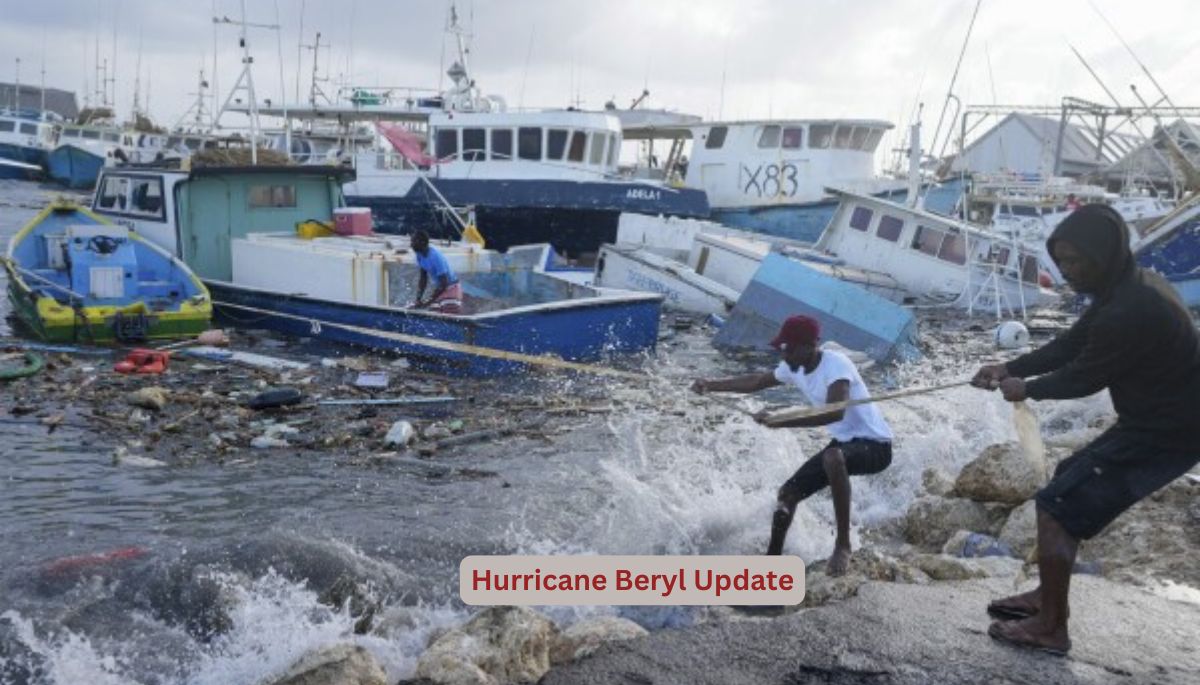Hurricane Beryl Update Landfall, Impacts, and Safety Precautions
The Atlantic hurricane season often brings a wave of concern, especially when storms like Hurricane Beryl develop. With a reputation for intense winds and heavy rainfall, Hurricane Beryl has been closely monitored as it approaches land. This article delves into the latest updates on Hurricane Beryl, examining its path, landfall, effects, and essential safety measures. Read on to understand this storm’s impact and how you can stay safe during hurricane events.
What Is Hurricane Beryl?
Hurricane Beryl originated as a tropical storm in the Atlantic Ocean and quickly escalated into a powerful hurricane, capturing the attention of meteorologists and coastal residents alike. Initially tracked by the National Hurricane Center and National Weather Service (NWS), Beryl’s trajectory and intensity have been closely observed due to the risks it poses to vulnerable areas along its path.
Tracking Hurricane Beryl’s Path
The path of Hurricane Beryl has been a central focus of meteorologists as they analyze satellite imagery and weather patterns to predict its movements. The National Weather Service (NWS) reports that Hurricane Beryl made landfall near the coast, with data indicating that its center pressure dropped to around 979 millibars (28.91 inches). Beryl’s path spans across key coastal regions, where high winds, storm surges, and flooding are likely.
When and Where Did Hurricane Beryl Make Landfall?
Hurricane Beryl made landfall near the Louisiana coast, bringing powerful winds and significant rain. By the time it reached land, Beryl’s winds were strong enough to cause extensive structural damage and disrupt local infrastructure. This landfall location was anticipated based on the storm’s trajectory from the Caribbean Sea toward the Gulf of Mexico. The time of landfall is a critical factor in understanding the storm’s behavior and impact.
Key Characteristics of Hurricane Beryl
To fully grasp the magnitude of Hurricane Beryl, it’s essential to break down its core characteristics:
- Wind Speeds: Beryl reached high sustained wind speeds that posed risks to buildings, trees, and power lines.
- Pressure Levels: The central pressure of 979 millibars signifies an intense storm with a likelihood of substantial wind impact.
- Rainfall Volume: Heavy rainfall accompanies Beryl, increasing the risk of flash flooding, especially in low-lying areas.
- Storm Surge: Coastal regions have experienced elevated water levels due to Beryl, contributing to beach erosion and possible flooding.
Immediate Impact of Hurricane Beryl on Coastal Communities
Coastal areas, particularly those around Louisiana and neighboring states, bore the brunt of Hurricane Beryl’s powerful winds and torrential rain. Homes and buildings in these regions sustained damage, with power outages reported widely. Due to Beryl’s strength, coastal erosion, tree falls, and infrastructure damage became immediate concerns. Flooding from both rainfall and storm surge also poses a risk to low-lying communities, making it essential to heed evacuation orders.
Flooding and Storm Surge: Major Concerns
Flooding remains one of the most dangerous effects of hurricanes like Beryl. Rainfall from this storm was considerable, filling rivers and reservoirs to dangerous levels. Storm surges also pushed seawater further inland, exacerbating the flooding in coastal communities. It’s critical for residents to avoid flooded areas, as the risks of drowning and contamination are high.
Preparations for Hurricane Beryl: What You Should Do
Preparation is key during any hurricane event. For those who reside in affected areas, here are some essential tips to consider:
- Stay Informed: Follow reliable sources like the National Hurricane Center and local news.
- Evacuate if Ordered: Evacuating when advised is crucial to personal safety.
- Create an Emergency Kit: This should include water, food, medications, flashlights, batteries, and first-aid supplies.
- Protect Your Property: Board up windows and secure outdoor objects.
- Prepare for Power Outages: Charge electronics and keep battery-powered devices on hand.
How Hurricane Beryl Compares to Past Hurricanes
Hurricane Beryl has many parallels to past storms in terms of intensity and impact, yet each hurricane has unique features. Compared to similar hurricanes in recent years, Beryl’s pressure drop and sustained wind speeds are significant, placing it among the stronger storms to make landfall in the region. Learning from previous hurricanes enables better preparation and response from both individuals and government agencies.
Environmental Impacts of Hurricane Beryl
Beyond immediate structural damage, hurricanes like Beryl have lasting environmental impacts. Flooding can lead to erosion and sediment displacement, affecting ecosystems and wildlife habitats. Additionally, saltwater intrusion from storm surges can harm freshwater ecosystems. Understanding these effects helps in long-term recovery and conservation efforts in affected areas.
The Role of the National Weather Service in Monitoring Hurricane Beryl
The National Weather Service (NWS) and National Hurricane Center have been instrumental in tracking and updating information about Hurricane Beryl. Through advanced satellite systems, meteorologists can accurately predict the storm’s path, helping to save lives. Regular updates from these agencies are essential for residents and local authorities to make informed decisions on safety measures and evacuations.
After the Storm: Steps for Recovery
Once Hurricane Beryl has passed, recovery efforts begin. Here’s what residents and communities should focus on:
- Assessing Damage: Surveying structural and environmental damage helps prioritize repairs.
- Restoring Power: Power companies work to restore services, but it may take time depending on the severity.
- Cleaning Up Debris: Clearing fallen trees and debris from roads and properties is crucial for safety.
- Providing Aid: Local authorities often provide aid and support for those in need.
Read more – Hurricane Helene Missing People List
Conclusion
As Hurricane Beryl serves as a reminder of the power of nature, it’s clear that preparation and awareness are vital. Keeping up with updates from trusted sources like the National Weather Service ensures that individuals and communities are well-prepared for such events. By taking preventive measures and understanding hurricane dynamics, we can minimize risks and protect lives during future storms.
